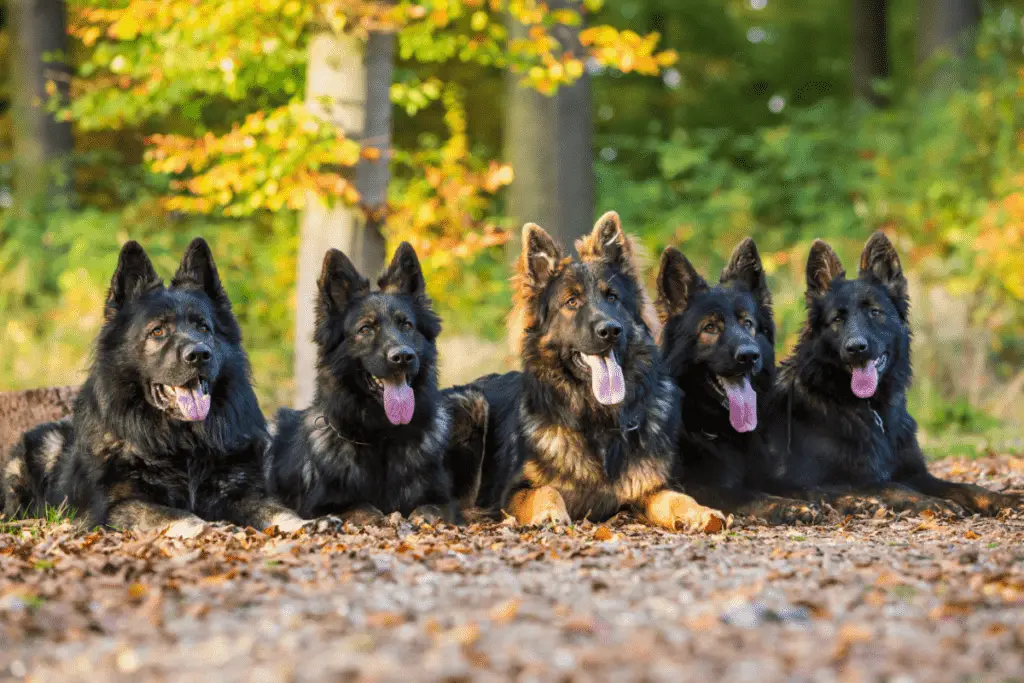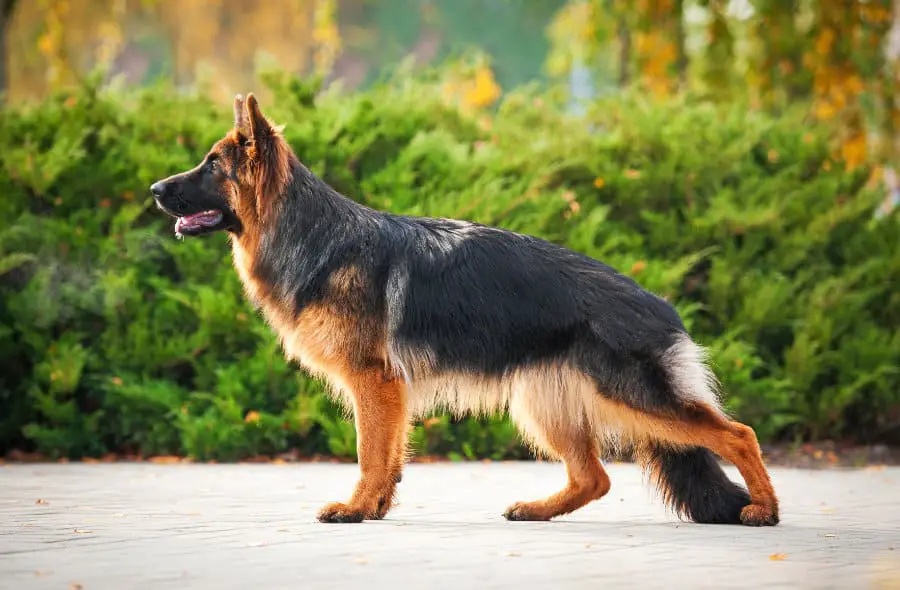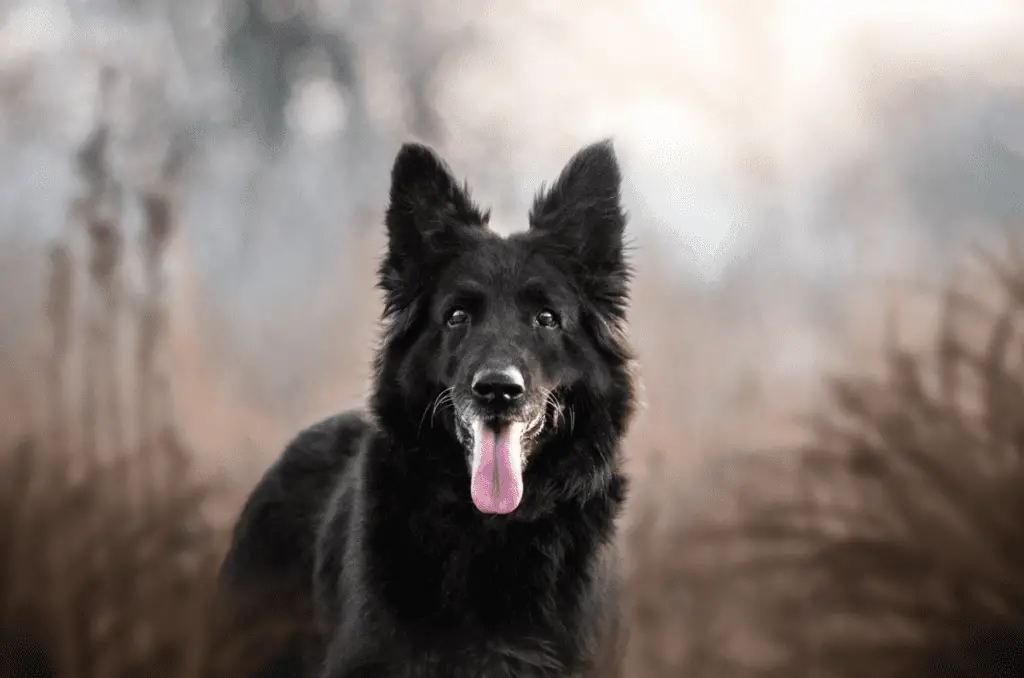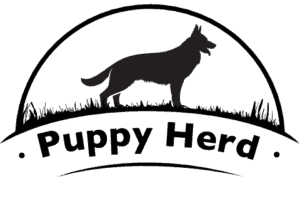If you’ve just begun researching the German Shepherd breed, you may have noticed that there is a lot of variation between one German Shepherd dog and the next. Size, coat color, coat length, and body shape are different among the distinct types of German Shepherds. But how many different types are there?
There are five different types of German Shepherds: The North American, West German Show Line, West German Work Line, East German/DDR, and Czech German Shepherds.
As far as appearances go, the five types of different German Shepherds can be further classified by coat color, length, size, and body shape. This article will explain the difference between working line and show line German Shepherds, their origin, and their regional differences.

What Are the 5 Types of German Shepherds?
German Shepherds diverged from the original standardized breed in West Germany when they became widely dispersed throughout North America. The breed was slightly altered when German Shepherds were bred to enhance specific characteristics.
The five different types of German shepherds are:
- East German/DDR working line German Shepherds
- West German working line German Shepherds
- Czech working line German Shepherds
- North American show line German Shepherds
- West German show line German Shepherds
While all German Shepherds are one breed, the different types of German Shepherds are divided into the Working Line and Show Line categories according to their purpose. Some German Shepherd dogs were bred for aesthetics, while others were bred for their intelligence, health, and disposition.
Working Line German Shepherds
Working line German Shepherds are working dogs, which means that they were bred to perform a specific job. Physically, they tend to have straight backs, a more compact body, and are more muscular.
These working dogs’ protective and defensive disposition is known as the “Schutzhund” characteristic.
Working German Shepherd lines from The Czech Republic originated on the border of Czechoslovakia.
In contrast, the DDR (Deutsches Demokratische Republik) working line German Shepherds originated in what was then known as East Germany.
West German Working Line German Shepherds
These dogs are the original German Shepherd breed.
The breed was developed by Max von Stephanitz in the 1980s when he began to experiment with dog breeding and standardization.
Von Stephanitz gained valuable insights into biology and anatomy while serving as a career cavalry officer at the Veterinary College in Berlin. He loved attending dog shows but noticed that the German Shepherd working dog of the time varied greatly in appearance and temperament.
He purchased Horand von Grafrath, a dog he considered a prime example of what the German Shepherd should be, at one of these shows. With Horand as his primary breeding stock, he began work to better the breed and founded an organization to standardize it.
East German/DDR Working Line German Shepherds
The DDR German Shepherd, commonly known as the East German Shepherd, developed traits that were different from German Shepherds in the West when Germany was divided into two nations after WWI.
DDR German Shepherds were exemplary in search and rescue missions and border patrol.
They were known for loyalty, intelligence, confidence, obedience, and bravery. DDR German Shepherds were also much bigger and stronger than West German Shepherds
The German government developed strict breeding guidelines for DDR German Shepherds and enforced them – only the strongest individuals were allowed to breed.
Dogs with hip dysplasia were disqualified, which resulted in the perfect army dog.
Czech Working Line German Shepherds
This breed arose when the DDR German Shepherds were bred with Czech border dogs in 1955. The Czech working line German Shepherds were bred to have all the desirable traits of DDR German Shepherds but a higher tolerance for the harsh weather on the Czech border.

Show Line German Shepherds
While all German Shepherds share the same German heritage, show line German Shepherds began to diverge from the original working lines as they were bred for desirable physical features such as coloring, size, and fur length.
Physically, show line German Shepherds tend to have backs that slope down to low and angular hips, a broader body, and a longer, softer coat. However, breeding for the distinctive, low hips makes them more prone to hip and elbow dysplasia.
A show-line German Shepherd is generally calmer, friendlier, and more easygoing.
North American Show Line German Shepherds
For the last 50 years, North American show line German Shepherds have been bred with other American and Canadian German Shepherds, which means that they have diverged dramatically from Germany’s original working dogs.
The AKC and CKC regulate which German Shepherds are permitted to enter shows, and they are highly particular about these dogs’ appearance.
According to AKC (American Kennel Club) and CKC (Canadian Kennel Club) standards, German Shepherds must have “extreme rear angulation” (a sloped back with low, angular hips) which facilitates a “flying trot” gait, short hair, tan legs, and a black saddle.
The original “Schutzhund” characteristic is not sought-after in show line German Shepherds.
West German Show Line German Shepherds
Like the American and Canadian show lines, these dogs are bred for a specific appearance and distinctive gait.
However, West German show line German Shepherds are also required to pass obedience and agility trials. This generally means that the West German show line will have desirable traits like loyalty and intelligence.
In appearance, while very similar to American and Canadian lines, red coloring and a black saddle in West German show lines are preferred to tan coloring and a black saddle.

Types Of German Shepherd According To Coat Color
The types of German Shepherds can be further broken down into four different coat colors and markings:
- Saddle coat German Shepherd: The “saddle” refers to the black saddle-shaped marking on the back, which is one of the most common colorations.
- Solid color German Shepherd: A solid colored German Shepherd is much rarer than a saddle coat. Solid coat German shepherds may be all white or all black.
- Sable German Shepherd: Also known as “Agouti” coloration, a sable German Shepherd has multicolored hairs all over its body that give it a “salt and pepper” appearance.
- Panda German Shepherd: While rare, Panda German Shepherds have a genetic mutation that can manifest in solid patches of white on the belly or face.
Final Thoughts
Although all German Shepherds are part of one standardized breed of dog, there are only two types of German Shepherds—those from working lines and those from show lines. However, five different variants of German Shepherds developed due to selective breeding.
These differences are primarily determined by the region and what the dog’s purpose is.
